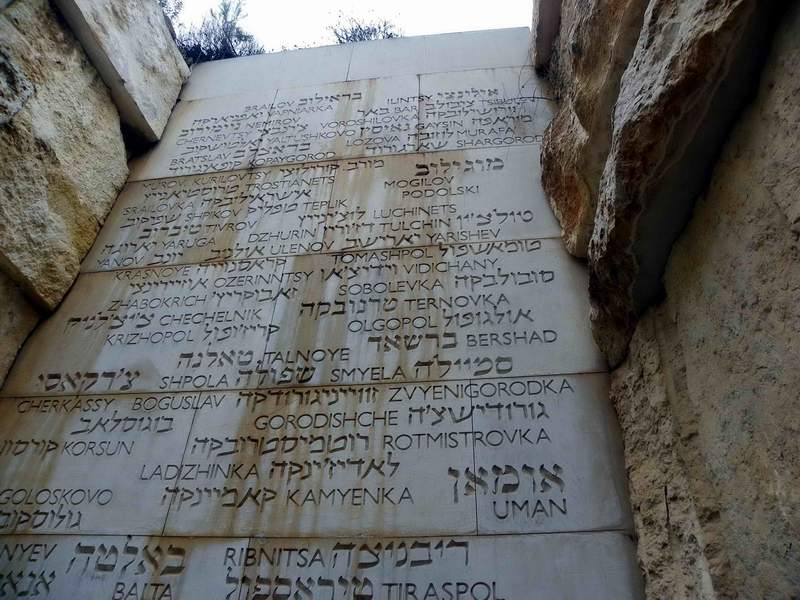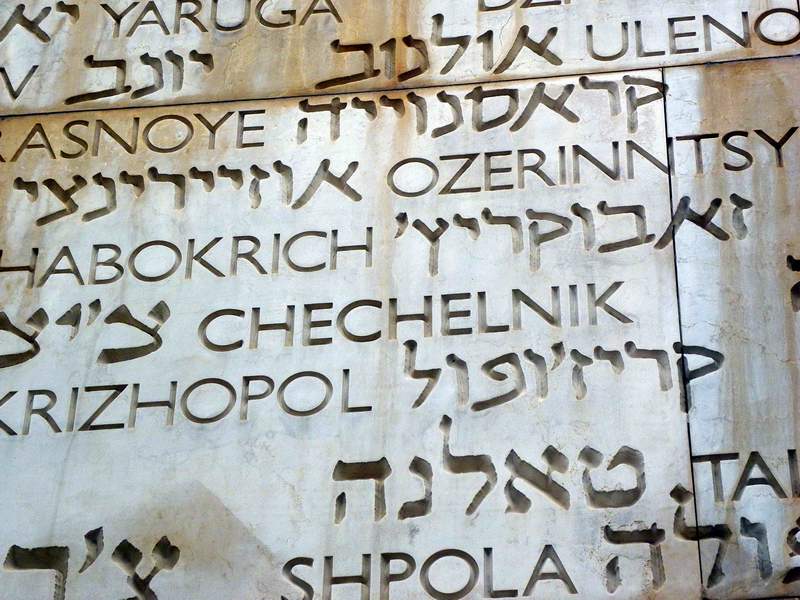Holocaust in Chechelnik
By L. Altman
Article from the book Holocaust In The URSS Encyclopedia, published in Moscow in 2009
Thanks to Alexander Vishnevetsky for the article and the pictures
 "Valley of the devastated communities" at Yad Vashem.
"Valley of the devastated communities" at Yad Vashem.
In this valley there are 107 stone walls displaying 5000 Jewish communities that were partially or completely destroyed in the Holocaust.
Chechelnik-urban village, a district center in the Vinnitsa region of Ukraine.
In 1939, 1327 Jews lived Chechelnik (66.1% of the population) and 1474 throughout the area. In the 1930s, was the center of the Jewish Chechelnik village council (2063 inhabitants in 1931).
Occupied by July 24, 1941, dozens of Jewish families were evacuated on the eve. Many men were drafted into the army.
In early August, all Jews were herded into the street, adjacent to the sugar factory. Before the crowd set up a machine gun and demanded the extradition of communists; several men were forced to dig a grave. When the number of Jews fled the area, they were caught and shot, along with the hostages.
The mass execution was stopped by a German (according to other sources, Romanian) officer.
In the village shops were looted, Jewish families were beated and robbed. The participants were peasant women and women from nearby villages.
On September 1, 1941 Chechelnik was transferred to the Transnistria area(county Balta).
At the end of 1941 the Romanian occupiers created a ghetto in the village, which housed about one thousand local Jews and Jewish refugees from Kodyma and Gerbils. The ghetto occupied three streets (Kalinin, Lenin and Marx). All Jews had to wear the yellow Star of David. They were taken out for forced labor, and forced to build a public toilet.
In November 1941, Chechelnik received more than one thousand Jews from Bessarabia and Bukovina, about 54 of them died from hunger and disease.
Some of the deportees had brought with them valuable things, which made it possible to bribe the Romanian administration.
 Detail of Chechelnik stone
Detail of Chechelnik stone
A Jewish community was established, headed by Joseph Chaim Zavadsky and Fisher, as well as "the Jewish guards."
During all the years of the occupation a Hasidic tzaddik - "chechelniker rabbi," remained in the ghetto. He conducted the religious life and operated the Jewish Hospital.
Since January, 1943 aid began to flow to Chechelnik from the Jewish community in Romania. Because of this a dining room was opened for the children and the needy.
However, due to epidemics of typhus and starvation a significant part of the deportees died.
On September 1, 1943 475 Jews were deported to Chechelnik (421 of Bessarabia and Bukovina, 54).
In 1943, about 60 young Jews were sent to work to Nikolaev, of which 15 were killed.
In the village operated and underground organization, which had a connection with the guerrillas.
Chechelnik was released March 17, 1944. Soon I. Zawadzki was sentenced to 15 years in the camps.
Lit.: CA Wine. F. P-6022. He said. A. D. 29; GAOdO. F. R-2358. Gn. A. J. 110, 666, 673, 100 Jewish settlements in Ukraine. No. Two. Podolia. St. Petersburg., 2000.
And L. Altman